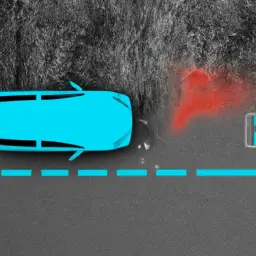Are you looking for ways to help your students develop critical thinking and innovation skills? One approach that has gained popularity in recent years is the concept of grit.
Grit refers to the ability to persevere through challenges and setbacks, and it has been shown to be a key factor in success, both in education and in life. In STEAM education, where students are encouraged to explore and experiment, grit is particularly important as it helps students to overcome obstacles and persist in their efforts to solve problems.
So how can you nurture grit in your students? There are a variety of strategies you can use, from setting challenging yet achievable goals to providing students with opportunities to learn from failure.
By fostering resilience and encouraging creativity, you can help your students to develop the grit they need to succeed not just in STEAM education, but in any field they choose to pursue. In this article, we will explore the importance of grit in STEAM education and provide practical tips for how you can incorporate this concept into your teaching.
Key Takeaways
- Grit and perseverance are crucial for success in STEAM education and life
- Failure should be embraced as a learning opportunity to build grit
- Strategies for fostering grit include goal-setting, learning from failure, collaboration, and reflection and adaptation
- STEAM education equips students with skills to solve complex problems and fosters innovation and critical thinking, which are increasingly important in today’s society.
Understanding the Importance of Grit in STEAM Education
Grit’s significance in STEAM education cannot be overstated, as it fosters perseverance, resilience, and the ability to overcome obstacles.
Perseverance is crucial in STEAM education because it enables learners to stick to a problem until they come up with a solution. It’s not always easy to find solutions to complex STEAM problems, and learners who lack perseverance tend to give up easily. However, with perseverance, learners can develop a never-give-up attitude that drives them to research, experiment, and iterate until they find a solution.
A closer look at success stories and case studies reveals that grit plays a significant role in STEAM education. For instance, Thomas Edison, the inventor of the light bulb, failed many times before he finally succeeded. His famous quote, "I have not failed. I have just found 10,000 ways that won’t work,"highlights the importance of perseverance in STEAM education.
Similarly, other success stories in STEAM fields such as Elon Musk, Steve Jobs, and Bill Gates, underscore the critical role of grit in STEAM education. Therefore, for learners to succeed in STEAM education, they must cultivate grit, perseverance, and resilience.
Strategies for Fostering Grit in Students
You can cultivate resilience and perseverance in your students by providing them with challenging tasks that require effort and persistence. Collaboration strategies, such as group projects and peer-to-peer feedback, can also help students develop grit. By working together, students learn to communicate effectively and support each other through difficult tasks. This fosters a sense of community and encourages students to push through challenges together.
Goal-setting techniques can also be effective in fostering grit. Encourage your students to set both short-term and long-term goals, and provide them with the support and resources they need to achieve those goals. Celebrate their successes along the way and help them learn from their failures.
By teaching your students to set goals and work towards them, you can help them develop the resilience and perseverance they need to succeed in STEAM education and beyond.
The Role of Failure in Building Grit
When it comes to building grit, failure is an essential ingredient. It’s important to embrace failure as a learning opportunity, rather than letting it discourage you.
Encouraging reflection on what went wrong, and how you can adapt and improve, is crucial in developing resilience and perseverance.
Embracing Failure as a Learning Opportunity
Picture yourself as a young inventor, eager to create something new and innovative. You have a vision in your mind, and the excitement of bringing it to life drives you forward. However, what happens when things don’t go as planned? Do you give up and move on to something else? Or do you embrace failure as a learning opportunity and keep pushing forward?
Embracing failure is crucial in nurturing grit and fostering a growth mindset. Here are some ways to make the most out of your failures:
-
Reframe your mindset: Instead of seeing failure as a negative outcome, see it as a necessary step towards success. Each failure brings you closer to your goal.
-
Analyze your mistakes: Take time to reflect on what went wrong and why. Use this information to improve your future attempts.
-
Seek feedback: Get input from others on what you could do differently next time. This can provide you with valuable insights and perspectives.
-
Keep practicing: The more you try, the better you become. Keep working on your invention, and don’t be afraid to make mistakes along the way.
-
Celebrate progress: Even if you don’t achieve your ultimate goal, celebrate the progress you’ve made. Every step forward is a step in the right direction.
Encouraging Reflection and Adaptation
By encouraging reflection and adaptation, you can improve your problem-solving skills and learn from your experiences. Reflection exercises can help you identify what worked well and what didn’t in a particular situation. This way, you can analyze your behavior and decision-making process to see what could be improved upon in the future.
Adaptive challenges are situations that require you to adapt your approach to succeed. By embracing these challenges, you can learn to think critically and creatively, which are essential skills in STEAM education. The table below illustrates the difference between technical challenges and adaptive challenges. Technical challenges have clear solutions that can be learned through instruction and practice, while adaptive challenges require a more personalized approach and may not have a clear solution. By practicing reflection and adaptation, you can become better equipped to handle adaptive challenges and achieve success in STEAM education.
| Technical Challenge | Adaptive Challenge |
|---|---|
| Solving a math problem | Developing a new product |
| Following a set of instructions | Leading a team through a complex project |
| Memorizing a list of facts | Finding a solution to a complex problem |
| Knowing how to code a program | Collaborating with diverse individuals to create a solution that benefits society as a whole |
Developing Resilience in STEAM Education
Fostering resilience in STEAM education is crucial to equip students with the perseverance and adaptability skills needed to navigate challenges and succeed in innovative problem-solving. Developing resilience involves techniques that help students bounce back from setbacks, such as learning from failure and maintaining a growth mindset.
By teaching students how to cope with adversity, they can approach problem-solving with confidence and flexibility, knowing that challenges are opportunities for growth rather than roadblocks to success. Moreover, developing resilience in STEAM education helps balance the equation between grit and talent.
While talent is important, it’s not the only factor that determines success in STEAM fields. Grit, or the ability to persevere and overcome obstacles, is equally important. By encouraging resilience, educators can help students tap into their innate grit and develop the perseverance needed to succeed in STEAM fields.
Ultimately, fostering resilience in STEAM education is not only beneficial for individual students but also for the long-term growth and innovation of the field.
Nurturing Creativity and Innovation through Grit
You can encourage risk-taking and promote out-of-the-box thinking by nurturing creativity and innovation through grit.
This means embracing failure as a learning opportunity, pushing yourself to think beyond the obvious solutions, and persevering even when faced with obstacles.
By building a culture of grit in your STEAM education program, you can empower your students to take risks, think innovatively, and ultimately succeed in the fast-paced and ever-changing world of technology and innovation.
Encouraging Risk-Taking
Encouraging risk-taking is essential in fostering innovation and critical thinking skills in steam education, as students learn to embrace challenges and persevere through setbacks. By allowing students to take risks, they are given the opportunity to explore and experiment with new ideas. This process of trial and error not only helps to build resilience, but also encourages creativity and a willingness to think outside the box.
In order to encourage risk-taking, it is important to celebrate progress and not just success. This means recognizing the effort and hard work that students put in, regardless of whether or not they achieve their desired outcome. By acknowledging the process instead of just the end result, students are encouraged to take risks without fear of failure. This can be further emphasized through a simple table that highlights the importance of encouraging experimentation and celebrating progress.
| Importance of Encouraging Risk-Taking | ||||
|---|---|---|---|---|
| Encourages exploration and experimentation | Builds resilience and perseverance | Fosters creativity and innovation | ||
| Celebrates progress and effort, not just success | Emphasizes the process over the outcome | Helps students overcome fear of failure | However, it also requires guidance and support to ensure that students are taking calculated risks and learning from their mistakes. |
Promoting Out-of-the-Box Thinking
By exploring unconventional ideas and approaches, you can unlock your imagination and tap into your full potential. This is where promoting out-of-the-box thinking comes in. It encourages you to think beyond what’s already known and explore new possibilities.
Through brainstorming techniques, you can come up with fresh perspectives and ideas that could lead to innovative solutions. One way to promote out-of-the-box thinking is through problem-solving challenges. These challenges push you to think critically and creatively to find solutions. They require you to think beyond the obvious and consider different angles and approaches.
By doing so, you can develop a deeper understanding of complex problems and come up with more effective and efficient solutions. With grit and perseverance, you can overcome any obstacle and come up with game-changing ideas.
The Future of STEAM Education and the Need for Grit
The future of STEAM education looks promising, as society becomes increasingly reliant on technology and innovation. With the rise of automation and artificial intelligence, students who possess grit and determination will be the ones who thrive in the job market.
This is why it’s important for STEAM education to not only focus on technical skills, but also on cultivating grit through real world experiences.
STEAM education’s impact on society is immense, as it equips students with the necessary skills to solve complex problems. However, it’s not enough to simply teach technical skills and hope that students will apply them in innovative ways.
By fostering grit and determination, students are better equipped to take risks and approach problems from different angles. This will lead to more creative and effective solutions, which will ultimately benefit society as a whole.
Frequently Asked Questions
What is the difference between grit and perseverance?
When it comes to perseverance and grit, the main difference lies in their definitions. Perseverance is the act of persisting in the face of obstacles, while grit refers to the ability to sustain effort and interest over an extended period of time.
To put it simply, perseverance is about sticking with a task, while grit is about continuously working towards a long-term goal. Real life examples of perseverance could be a student constantly studying for an exam, or an athlete training for a competition.
On the other hand, grit can be seen in someone who’s committed to their passion project, or a scientist who spends years researching and developing a breakthrough discovery. Both are important qualities to have, but grit is particularly valuable in STEAM education, where innovation and critical thinking require sustained effort and determination.
How can teachers differentiate between a lack of grit and a lack of interest in STEAM subjects?
To differentiate between a lack of grit and a lack of interest in STEAM subjects, you need to pay attention to student motivation.
If a student is not interested in a particular subject, they may lack motivation and not put in the effort needed to succeed. However, if a student has grit, they will persevere through challenging tasks and setbacks, even if they don’t initially have an interest in the subject.
Teachers can use various strategies to foster grit in their students, such as setting high expectations, providing opportunities for students to take risks and learn from failure, and offering praise and encouragement for effort rather than just achievement.
By focusing on student motivation and using these strategies, teachers can better differentiate between a lack of grit and a lack of interest in STEAM subjects.
Can grit be taught or is it a personality trait that some students are simply born with?
When it comes to grit, some people are naturally more resilient than others. However, that doesn’t mean that grit can’t be taught.
In fact, teaching strategies can be used to help students develop their ability to persevere and overcome challenges. While nature plays a role in determining a person’s level of grit, nurture is equally important.
By providing students with opportunities to face adversity and encouraging them to persist through difficult tasks, teachers can help cultivate a growth mindset that emphasizes the importance of effort over innate ability.
Ultimately, while some students may be born with more grit than others, all students can benefit from learning strategies to help them develop their resilience and perseverance.
How can schools and educators ensure that they are not promoting unhealthy levels of stress and burnout in students while also nurturing grit?
To ensure that you’re not promoting unhealthy stress and burnout in students while nurturing grit, it’s important to adopt mindful teaching approaches.
This means being aware of students’ emotional and mental states and creating a safe and supportive learning environment. Balancing expectations is crucial, too, as setting unrealistic goals or putting too much pressure on students can lead to burnout.
Encouraging self-reflection and self-care practices can help students manage stress and build resilience. Prioritizing student well-being and fostering a growth mindset can help them develop grit in a healthy and sustainable way.
Are there any potential downsides or negative consequences to promoting grit in education?
When promoting grit in education, it’s important to be aware of the potential drawbacks and negative consequences that may arise. Balancing grit and self care is key in avoiding unhealthy levels of stress and burnout in students.
While grit can be a valuable trait to cultivate, it’s important to recognize that not all students may thrive under a strictly gritty approach. It’s important to be mindful of individual needs and to provide support when necessary.
Additionally, a focus solely on grit may lead to a neglect of other important skills and qualities such as creativity and empathy. As with any educational approach, finding the right balance is essential.
Conclusion
Congratulations, you’ve made it to the end of the article! By now, you should have a solid understanding of the importance of grit in STEAM education, as well as strategies for fostering this crucial quality in your students.
Remember, grit is not just about sticking with a task until it’s finished, but also about developing the resilience and creativity necessary to tackle complex problems and innovate new solutions.
As we look to the future of STEAM education, it’s clear that grit will only become more important. With rapidly evolving technologies and ever-changing global challenges, the ability to adapt, persevere, and think critically will be essential for success.
So keep nurturing grit in your students, and watch as they grow into confident, resilient, and innovative problem solvers.









































































































